The technology, media, and telecommunications (TMT) industry has vaulted years into the future in a matter of months, owing to the pandemic. The urgency to stay connected alone has raised the global market size of the telecom sector to USD 1.7 trillion. The TMT trends to watch for in 2021 are driven by technological advancements.
With surges in online gaming, video streaming, mobile data consumption, remote working models, voice traffic, and residential broadband; the industry saw companies make several operational improvements in network infrastructures to cope with increased technological demands. Past efforts of building networks that not only deliver good connectivity, but those that were also speedy, reliable, and resilient, have worked positively for the TMT sector’s performance, especially during the crisis.
To help market players build an informed strategic roadmap into the future, here’s a roundup of the trends we see picking momentum this year:
1) D2C Video Streaming
With people staying indoors and working remotely, the usage of collaboration and messaging tools, video calls, and video streaming increased greatly. Brands across sectors are using live streaming via social media to promote products, interact with viewers, answer questions and capture feedback. Lockdowns accelerated the demand for digital games and e-sports with new subscriptions spurring increased investment opportunities. In fact, the digital gaming market is set to see a growth of over 200 billion USD by 2022.
The video-on-demand (VoD) global market is expected to grow at a CAGR of 8.3% by this year. Subscription-based OTT platforms like Netflix, Hulu, Amazon Prime, and Disney+ Hotstar provide users with access to bundles based on different subscription models. For instance, Hotstar has content available for free and two subscription tiers offering basic and premium content. BookMyShow now streams plays and movies – both free of cost and chargeable on certain dates. In terms of device usage, people are increasingly opting to stream content to their smartphones from a convenience standpoint.
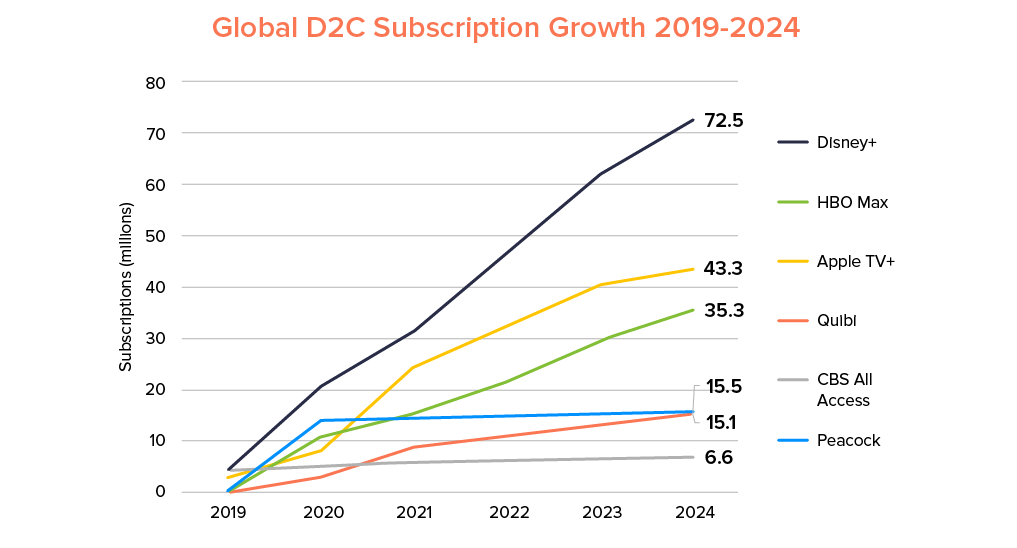
2) OpenRAN Architecture
Telecom companies are now adopting the new generation of technology. An OpenRan (Open Radio Access Network) architecture that enhances network growth, increases interoperability, reduces network cost enabling more market competition and customer choice. OpenRan allows telecom operators to combine vendor-neutral software and hardware components procured, which then helps network operators build and deploy 4G and 5G networks. Simultaneously, this architecture also improves the performance of 2G, 3G, and 4G networks.
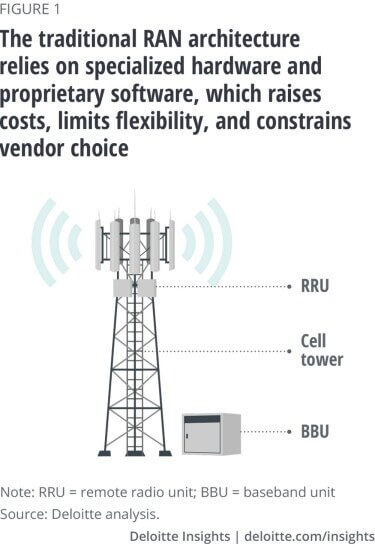
The latest Omdia forecast predicts that the global OpenRan market is likely to generate annual revenues worth USD 3.2 billion by 2024, making it 9.4% of the total 4G and 5G cellular network market.
Many network operators have committed to the adoption of OpenRan architecture, even forming partnerships for its implementation and further development. For instance, Rakuten Mobile in Japan is operating a 4G and 5G network that is based on OpenRan, partnering with companies like Nokia and Spanish company Telefónica. Both Nokia and Samsung are actively adopting OpenRan; Samsung is developing the technology in partnership with South Korean companies Solid, Innowireless, and FRTek.
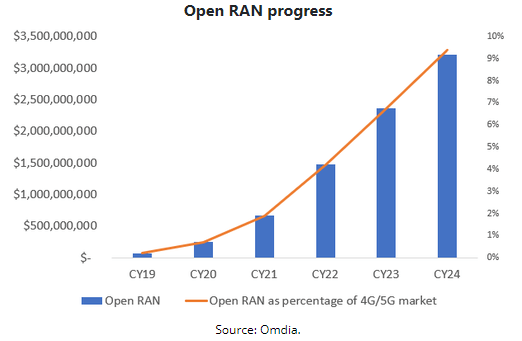
3) Rapid expansion of 5G
The current business landscape utilizes digital collaboration tools and has increased demand for high-speed connectivity. This demands that 5G networks offer increased bandwidth and speed to move data, lower connectivity cost, and low latency. Telecom companies need to maintain network speed and reliability that support huge machine-type interactions. Companies further require to keep expanding already-established networks and upgrade existing networks to leverage RAN and facilitate a large-scale 5G implementation. With 5G expected to increase mobile data usage by up to 400%, telecom companies need to expand their network footprint to satisfy customer needs.
Mordor Intelligence indicates that the 5G infrastructure market was valued at USD 3,466.85 million in 2020, expecting to reach USD 53,821.38 million by 2026. With a CAGR of 53.01% during the forecast period of 2021-2026, the 5G market is only growing. Telecom companies such as Verizon, AT&T, and T-Mobile have started creating new and innovative use cases of 5G for their customers showcasing its benefits. In fact, China is already in the developing stages for 6G networks, having successfully launched a 6G experimental test satellite in November last year.
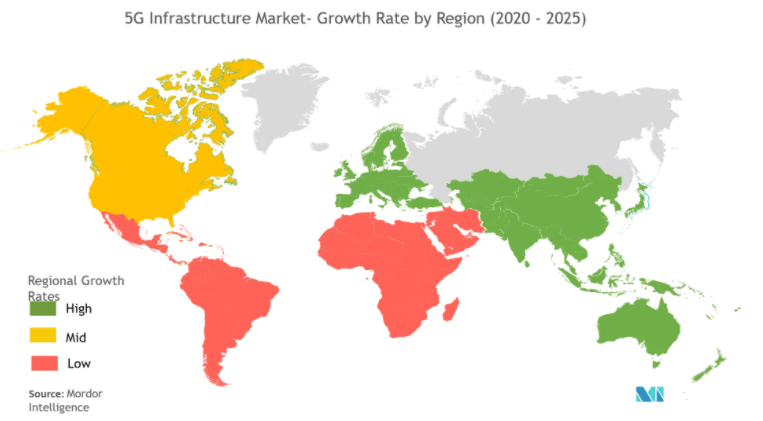
4) Mobile Edge Computing
Edge computing has significantly gained traction, with telecom companies now deploying mobile edge computing to enhance the combined usage of smartphones and IoT devices. Companies aim to strengthen edge computing to bring data storage and computing closer to the end user’s device. Edge computing accelerates the speed of processing real-time data collected and transmitted through connected devices. To store data locally from a public cloud, several telecom companies are expected to provide diverse resources to mobile edge computing.
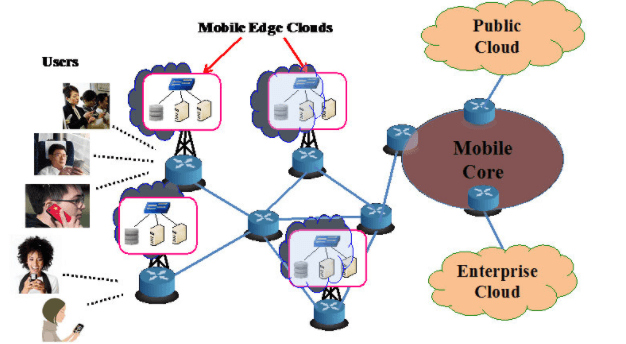
Registering a CAGR of 26.4% during the forecast period of 2021-2026, this architecture is rapidly evolving in keeping with the expansion of 5G networks. Companies are now integrating mobile edge computing with 5G to effectively distribute networking demands. The mobile edge computing market was valued at USD 186.2 Million in 2020, estimating a worth of USD 736.18 Million by 2026.
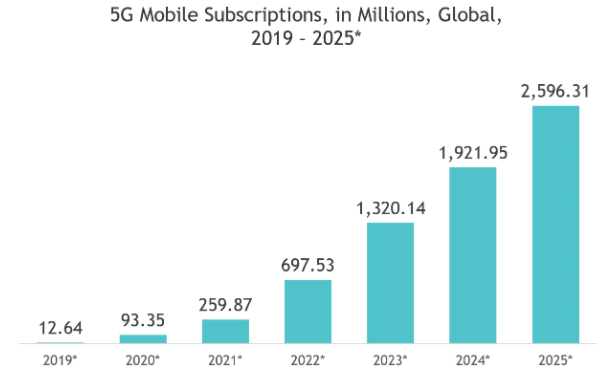
5) Increased use of AI and IoT solutions for enhanced customer experiences
Early forecasts indicated that over 85% of customer interactions would be handled and powered without any human interactions by 2021. AI-driven tools, virtual assistants, chatbots, and conversational AI platforms are being employed to enhance customer service by providing personalized customer engagement services. The near future sees an immense influence of AI in television, music and video streaming, animation, VFX, Out-of-Home advertising (OOH), radio, and a stronger presence in VoIP (Voice-over-Internet-Protocol) and cloud-based telephony.
The demand for home and industrial IoT devices and applications is set to accelerate- with estimates seeing over 40 billion connected devices by 2024. Investment in IoT has rapidly increased, with several global companies across telecom, technology, and even media and entertainment utilizing IoT solutions to track their customers, products, and premises. IoT solutions can help media companies predict and understand their customers’ needs, profiles, and demographics to create more personalized and better-targeted products, content, and advertisements that help increase advertising revenues.
Implementation and development of IoT technology in the telecom sector will be further boosted by 5G base stations – leading to a large connected network base of people, processes, devices, data, and things. 5G can further serve as a medium for integrating artificial intelligence (AI) and machine learning (ML) into the network edge- creating opportunities for telecom companies to enhance network experiences and reduce costs through automation. In many companies, AI is used to analyze large volumes of data, optimize networks, prevent disruptions and improve reliability. With IoT, service providers can provide effective and strong means of communication between devices and individuals. By 2025, estimates indicate there will be 2-3 IoT devices for every person on the planet, driving telcos to establish their place amidst competition with hyper-scalers like Google and Amazon.
6) Shifting from SD-WAN TO SASE
With the trend of remote-working here to stay, every organization’s IT team is faced with several challenges – ensuring they provide long-term, fast, reliable, and secure connectivity to an increasingly dispersed workforce. This has prompted many network companies to switch to Secure Access Service Edge (SASE) as it improves SD-WAN security, prevents threat and data loss, and aids in web filtering, DNS security, credential theft prevention, and next-generation firewall policies. SASE further helps in cost reduction, minimizing the number of security products IT teams have to manage, update, and maintain.
2021 is expected to see rapid growth in the SASE market, with businesses operating entirely remotely or adopting hybrid models. According to Gartner, by 2024, at least 40% of enterprises will have explicit strategies to adopt SASE, up from less than 1% at year-end 2018. SASE market growth is forecasted at 116% CAGR over the next 5 years.
7) Extensive usage of AR/VR
With AR and VR technologies creating large simulation environments for companies and individuals to work, talk, socialize and interact, forecasts indicate that the worldwide spending on AR/VR (augmented and virtual realities) will grow from USD 12.0 billion in 2020 to USD 72.8 billion in 2024. Media companies are using VR to focus on enhancing and producing video-based immersive media like movies, TV shows, and other forms of video content. Virtual rides are being developed for theme parks using AR. The technology is even used to provide advanced smartphone camera filters for Snapchat, Instagram, and Facebook. Digital reality headsets have helped enterprises train workers and students virtually when COVID-19 made meeting in person difficult.
AR also has the potential to take the quality of telecom equipment inspections to a new level by providing real-time access of the inspected hardware to remote experts. AR software and apps can help aid inspection professionals provide immediate consultations directly during the equipment examination by field personnel. Companies like Verizon and Vodafone have started experimenting with augmented reality (AR) technologies to provide effective and fast contactless service. With the expansive usage across the TMT sector from gaming, video streaming, seamless shopping experiences, telecom service provider inspections and network coverage among numerous other benefits, IDC forecasts the five year (2020-2024) CAGR for AR/VR spending to be 54%.

8) Strengthening Cybersecurity
The accelerated implementation of digital changes across industries has made cybersecurity incredibly challenging. 2020 saw several potential and real cyberattacks with a surge in Gen V cyber-attacks– including targeted ransomware. With remote working expected to continue in the post-Covid era, companies are working to build a robust cybersecurity infrastructure. The struggles with piracy, leaked content, ransomware threats while ensuring secure and flexible delivery options for subscribers have been a major concern for the streaming and on-demand media industry.
Cybersecurity is considered an important element in the telecom industry as hackers can easily commit cybercrimes, stealing confidential private data from corporations and their customers. Therefore telecom companies need to stay on alert, questioning the norms and initiating client discussions on data and network safety. Cybersecurity technology and service providers are now prioritizing support on current needs involving business continuity and remote work, employing IoT, AI, ML, and other advanced tools to fight technological hacks that could have serious impending repercussions.
With the telecom, media, and entertainment sectors witnessing rapid developments, firms that can innovate to stay agile and on the ball will witness sustained growth and stability. Netscribes provide timely market intelligence and insights to global enterprises across industries. To know how we can help you develop an informed growth strategy, contact us.






